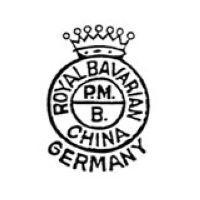
Image 010226-01-01
Used from 1890 onwards.
On March 15th 1878, the only 28 year old Hermann Kühnert bought a paper mill that was up for auction. Through the family relationship with the owner of the Porzellanfabrik F.A. Reinecke in Eisenberg (Thuringia), Kühnert had collected enough knowledge and planned to convert the paper mill into a factory specialized on porcelain production. The location was perfect as raw materials were easy to get, lots of people in the area were looking for work and there was a railway line nearby.
After first modifications Kühnert signed a contract with the businessman Magnus Tischler on May 15th 1878. Tischler was a partner of a decoration business located in the town of Neuhaus am Rennsteig. He became the financial director of the Moschendorf factory, enabling Kühnert to concentrate on his job as technical director. Qualified workers from Thuringia and Bohemia had been employed to ensure a quick start and so the first firing tests started at the end of November 1878. The trade register of Hof show that Kühnert had his firm registered at the beginning of 1879.
On February 11th 1895, the company was changed into a limited company and first expansion steps were made, resulting in a total of nine kilns and a total workforce of 700 people in 1905. During 1909, Otto Reinecke took over as Managing Director and between 1909 and 1929 the company even had Philipp Rosenthal (Selb) as member of the supervisory board.
From around 1910 until 1938 a contract existed between the Porzellanfabrik Moschendorf AG and the New York based import and distribution company Leon D. Bloch & Co. who not only ordered items in Moschendorf but from other manufacturers like Schmider in Zell. Even if the Moschendorf factory had it's own export marks, the items sold to Bloch carry a special mark which includes the name "Prince Regent", a trade name owned by the Moschendorf business which had been registered together with "Prince Regent Bavaria" and "Prince Regent Germany".
During 1915 there was a change in the supervisory board and Mr. C. Bruchmann took over from Hermann Wollmer. Even if there was a shortage of raw materials during World War I, the company was still able to finish a few small building projects - in addition to the already existing six houses for the workers, three additional houses were built between 1918 and 1921.
Also in 1921 the supervisory board saw another change as Bruchmann resigned and was replaced by Rudolf Reinecke, who was was also responsible for the Moschendorfer Porzellanmalerei Co. KG that was opened in Dresden the same year. Otto Reinecke was manager of this decoration studio until he retired from that function in 1934. The year 1922 saw the opening of another decoration studio in Eisenberg (Thuringia), but business itself was decreasing and in 1923 the company already had to fall back into short-time work. At first, 60 employees from the normal workforce of 360 were laid off. Between 1924 and 1927, two kilns were closed and working hours went down to 24 hours a week.
Just managing to survive the next years the limited company finally fell apart in 1937 and Otto Reinecke, who from 1910 until 1937 had run the Porzellanfabrik F.A. Reinecke in Thuringia together with his brother, Paul Reinecke, completely took over the factory.
During the war, Otto Reinecke had massive problems with the National Socialist Party as he was strictly against the regime. In 1941, a patch of lease-hold property from the Reinecke factory was used to build a camp for prisoners of war from eastern Europe. Reinecke had tried to avoid this and later even ignored orders to switch production to items used by the army. Annoyed by his opposition, the National Socialists closed the factory. In 1944 the premises of the closed factory were used to build a labour camp which at first was a branch of the concentration camp in Dachau for a short time until it was declared a branch of the concentration camp in Flossenbürg. The SS also took over the mansion of Otto Reinecke directly next to the factory.
After the Second World War most Bavarian porcelain manufacturers could instantly restart production but the factory in Moschendorf was not able to restart until autumn 1948. The reason for the delay was that the American forces believed that Reinecke had belonged to (or at least strongly supported) the SS, simply because he had "allowed" them to build a labour camp on his premises. Until his name was cleared, huge parts of the stock had already been taken away as compensation.
The Moschendorf factory and especially its Indischblau decoration series had a very good reputation. According to papers left by the banker Julius Kellermann in the city of Hof, it was exactly this flawless reputation which resulted in a spectacular offer from the Meissen factory during 1948: Reinecke was offered a chance to produce "Original Meissner Indischblau" decorated porcelain, including an exclusive right to use the Meissen crossed-sword mark for the time of the contract. Nobody knows what Reinecke must have thought, but he actually turned down the offer!
Otto Reinecke died in 1951 and as he had never married and did not have any children, he declared in his will that the beneficiary should be his housekeeper Elly Künzel. Over the years, the product range of the firm included normal household porcelain, luxurious decorating items and porcelain doll heads and they even used molds from the Porzellanfabrik Fraureuth, vormals Römer & Foedisch in Saxony.
But all the experience and good reputation could not help the factory and following massive financial problems, the factory closed on November 23rd 1957. Elly Künzel sold the estate to the city of Hof and received a life annuity.
The China Blau decoration was not a Moschendorf invention but had been acquired after the Nazis disowned the original creator, the porcelain factory owner Carl Hans Tuppack. During that process all his copyrights were declared void and everybody was able to copy his shapes and patterns.

Image 010226-01-01
Used from 1890 onwards.
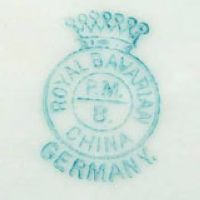
Image 010226-01-02
Used from 1890 onwards.
(Picture: Fran Kerbs)
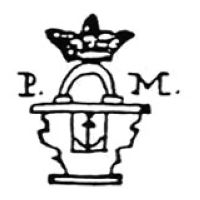
Image 010226-02-01
Used from 1895.
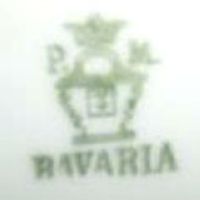
Image 010226-02-02
Used from 1895.
(Picture: Fran Kerbs)
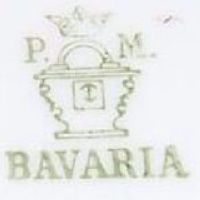
Image 010226-02-03
Used from 1895.
(Picture: Fran Kerbs)
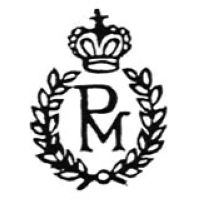
Image 010226-02-04
Also used from 1895.
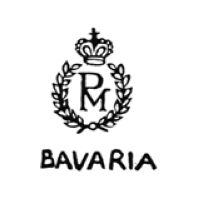
Image 010226-02-05
Used between 1895 and 1910.
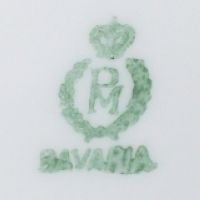
Image 010226-02-06
Used between 1895 and 1910.
(Picture: Jeffrey Garrett)
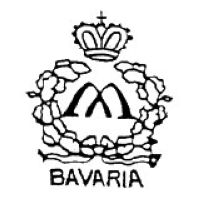
Image 010226-02-07
Used between 1900 and 1920.
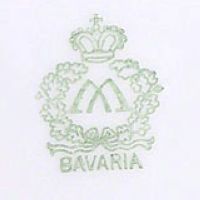
Image 010226-02-08
Used between 1900 and 1920.
(Picture: Vicki Young)
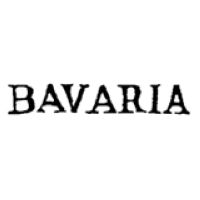
Image 010226-02-09
Used between 1900 and 1930.
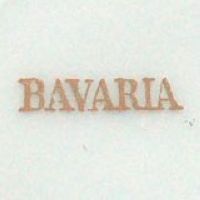
Image 010226-02-10
Used between 1900 and 1930, here in red.
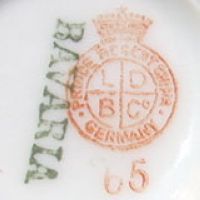
Image 010226-02-11
Like before, here with the "LDB Co." mark including "Prince Regent China" used from 1910 onwards.
(Picture: Donna Biester)
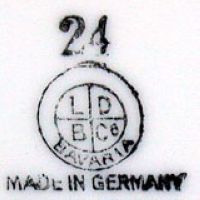
Image 010226-02-12
This is another version of the "LDB Co." mark on items made in Moschendorf.
(Picture: Fran Kerbs)
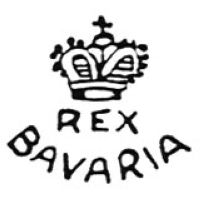
Image 010226-02-13
Used between 1900 and 1936 on products for export.
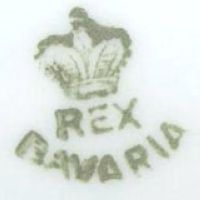
Image 010226-02-14
Used between 1900 and 1936.
(Picture: Fran Kerbs)
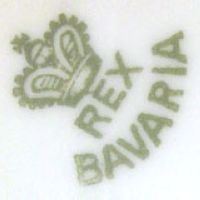
Image 010226-02-15
Used between 1900 and 1936.
(Picture: Fran Kerbs)
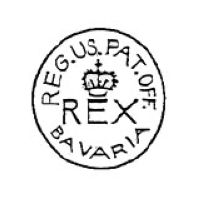
Image 010226-02-16
Used between 1900 and 1936 on products for export.
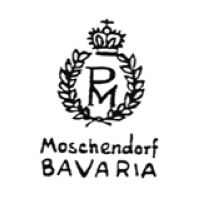
Image 010226-02-17
>Used from 1910 onwards.
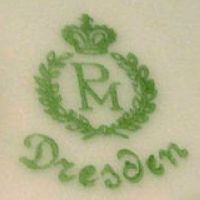
Image 010226-02-18
>Used between 1910 and 1935.
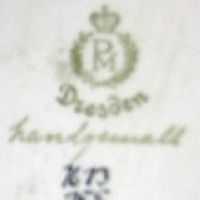
Image 010226-02-19
>Used between 1920 and 1935.
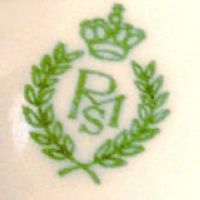
Image 010226-02-20
>Used between 1921 and 1928, used on Moschendorf items decorated at the studio in Dresden.
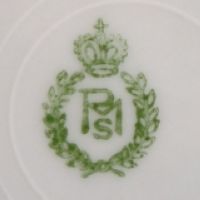
Image 010226-02-21
>Used between 1921 and 1928, used on Moschendorf items decorated at the studio in Dresden, here with 'HANDGEMALT' addition.
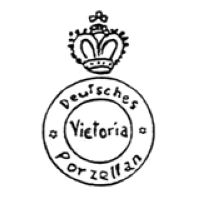
Image 010226-02-22
>Used between 1921 and 1928, Moschendorf items decorated in Dresden, the additional "S" stood for "Saxony".
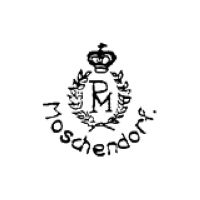
Image 010226-02-23
>Used between 1921 and 1928, Moschendorf items decorated in Dresden, the additional "S" stood for "Saxony".
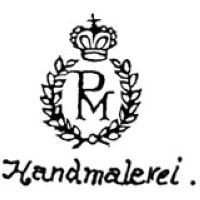
Image 010226-02/03-01
>Used between 1904 and 1938.
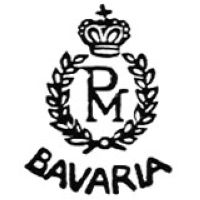
Image 010226-02/03-02
>Used between 1904 and 1938 on products for export.
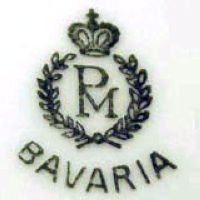
Image 010226-02/03-03
>Used between 1904 and 1938 on products for export, green version.
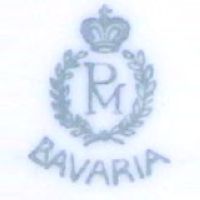
Image 010226-02/03-04
>Used between 1904 and 1938 on products for export, blue version.
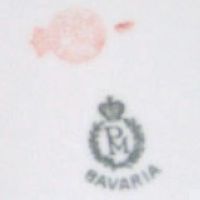
Image 010226-02/03-05
>Used between 1904 and 1938, here shown with the "LDB Co." mark.
(Picture: Melody Stacey)
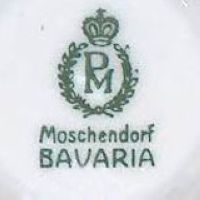
Image 010226-02/03-06
>Used between 1910 and 1957.
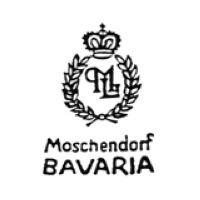
Image 010226-02/03-07
>Used from 1920 onwards.
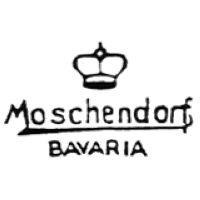
Image 010226-02/03-08
>Used from 1920 onwards.
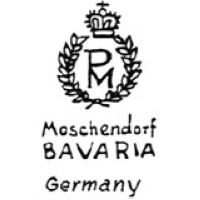
Image 010226-02/03-09
>Used from 1920 onwards.
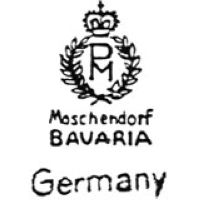
Image 010226-02/03-10
>Used from 1920 onwards.
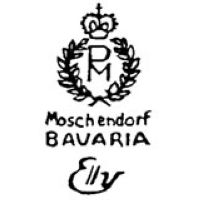
Image 010226-03-01
Used between 1952 and 1957.
© 2004-2025 C.S.Marshall, all rights reserved